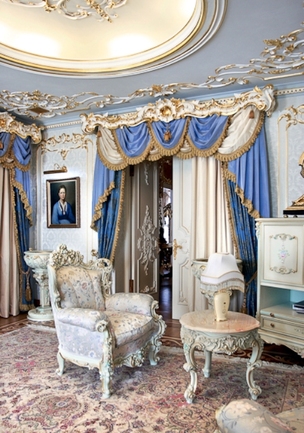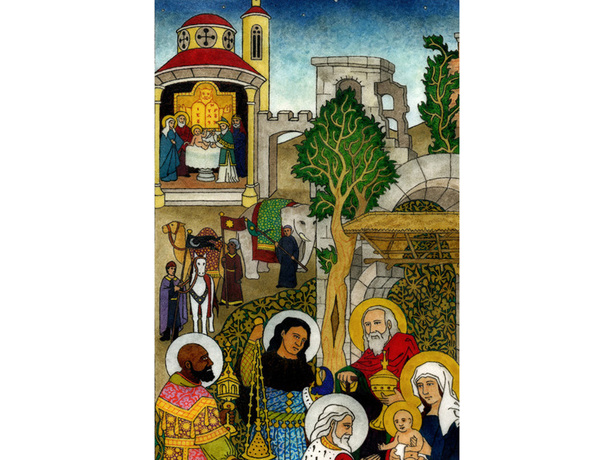Unknown author. Original accessible here.
1600-1800
These turbulent centuries saw script and images increasingly used by people opposed to the monolithic authorities of church and state. The American Revolution and Declaration of Independence and Bill of Rights, inspired the French Revolution, the successful Haitan revolt against the French and, much later, the Russian Revolution and the Bolivar movement in South and Central America.
The Graphic Artswere absolutely essential to all these developments.
The rapid evolution of printing technology, combined with the mass production and distribution of books, newspapers, flyers, posters and bulletins allowed new ideas to spread and take root at an unprecedented speed and scope.
The 17th century
Was a relatively quiet time for graphic innovation. An abundant stock of ornaments, punches, matrixes and woodblocks were available from the renaissance period , and there was little need for innovation. Works by William Shakespeare and other authors were printed and reached wide distribution.
The oldest surviving newspaper was published in Augsburg, Germany in 1609.
England had its first two page “running news” publications, called ‘corantos’ in 1621.
North America
Stephen Daye, a British locksmith, set up the first printery of the North American colonies in Cambridge, Massachusetts in 1639.
The first publication was “The Whole Booke of Psalms”, following the established tradition of publishing religious tracts to ensure sales.
By 1775 there were 50 print shops in the 13 North American colonies.
Copperplate engravings also became very popular, as newspaper- and book illustrations, as handbills and as affordable art for private homes
The Netherlands prospered as a seafaring and mercantile nation during the 17th century. Books printed in Dutch, English, French, German and Latin were printed and exported throughout Europe.
The types designed by the great Dutch designer and punch cutter Christoffel van Dyck at this time were in continues use until 1810.

Rococo style
Louis XIV.( -) ordered a committee of scholars to develop a new type for the Imprimiere Royal, the royal printing office established in 1640 to restore the quality of earlier printing,
The result was a type called Romain de Roi, which could only be used by the royal printery , other use was a capital offence( punishable by death).
Rococo was the style which flourished in France between 1720 and 1770.
Florid and intricate it consisted of swirls and curls, pastel colours and lavish gold and white decorations. It found its strongest and most exaggerated expression during the reign of Louis XV and in the graphic designs of Fournier de Jeune, who also produced the first complete standardized design systems for printing. Publications reflected the extravagant, sensuous lifestyles of the wealthy , who were completely oblivious to the misery and militancy of the poverty stricken masses.
-

-

Czech Republic, Prague, Prague Castle, Archbishop’s Palace -

Rococo Paintings
Rococo Fashion
Rococo Architecture

Archbishop’s Palace at Prague Castle, Czech Republic
Features of Rococo architecture
1. Elaborate curves and scrolls
2. Ornaments shaped like shells and plants
3. Intricate patterns
4. Delicate details
5. Complex, asymmetrical shapes
6. Light, pastel colors
Furniture Design
A highly ornamental style of art, furniture, and interior design became popular in France. Rococo, the lavish style combined the delicacy of Frenchrocaille with Italian barocco, or Baroque, details.
This luxurious apartment is located in St.Petersburg, Russia. The author is architect Igor Gremitsky. He created a space that is close to some palaces of this beautiful city. The style chosen was rococo as the owners wanted. They ordered some furniture in this style and the architect had to settle it with the interior. The interior looks amazing: stained-glass windows, overhead paintings, walls upholstered in silk, parquet. The colors are in the traditional range of rococo. The chandeliers are also luxurious and are put into the center of mirror ceiling to enlarge the amount of light produced. Despite of all these things there is everything that a person will need.
Cited from (http://architecture.about.com/od/periodsstyles/ig/Historic-Styles/Rococo.htm)

The French Revolution
The bloody revolt against the monarchy also led to a rejection of its lush designs and to a return to classical ideals. In the forefront of this was Giambattista Bodoni, the son of a poor printer in Northern Italy, who developed a system of interchangeable fonts which heralded mass production and the machine age. It became known as the ‘Modern style”. He published 345 books, mostly new editions of Greek and Roman classics, as well as a two-volume Manual of Type.
three illustrations/pamphlets/handbills from the French revolution
The origin of Information Graphics
The foundation for information graphics is analytic geometry, developed and first used by Rene Descartes (1596-1650).
Cartesian coordinates were later used by William Playfair to convert statistical data into
symbolic graphics.
His “Commercial and Political Atlas’ was published in 1786,
the Cartesian grid is relevant today in graphic design since it is the base of 3D modellling software, where character design and architecture design is portrayed.
The grid is a well known device in graphic design, mainly in typography, even to this day it is still being used. The grid is a commonly used term in many fields like architecture, mathematics, engineering and design and its meaning varies from guidelines, framework, supporting structure, channel of material flow to network of information flow.
The use of grid for visual layouts is not at all new. In visual art, we can find the inscriptions and the evidences of grid from the medieval period or even before.

The Illuminated printing of William Blake.
William Blake, (1757-1827) was an artist, poet and visionary. His integrated letterforms and hand coloured prints influenced 19th century Romanticism, expressionism, Art Noveau and abstract art.
Leonard Doob defines propaganda as the “control of individuals through the use of suggestion…regardless of whether or not the propaganda intends to exercise the control”, which suggests an element of mind engineering that is absent in public diplomacy. The ‘four minute men’ of the US propaganda machine at the Committee on Public Information would deliver inciting speeches to potential volunteers under a poster depicting a stern Uncle Sam pointing his finger at the impressionable young man, pleading: ‘I want YOU for US army’ in 1917.
Cited from (http://guity-novin.blogspot.com/2010/05/chapter-29-propaganda-posters.html).














